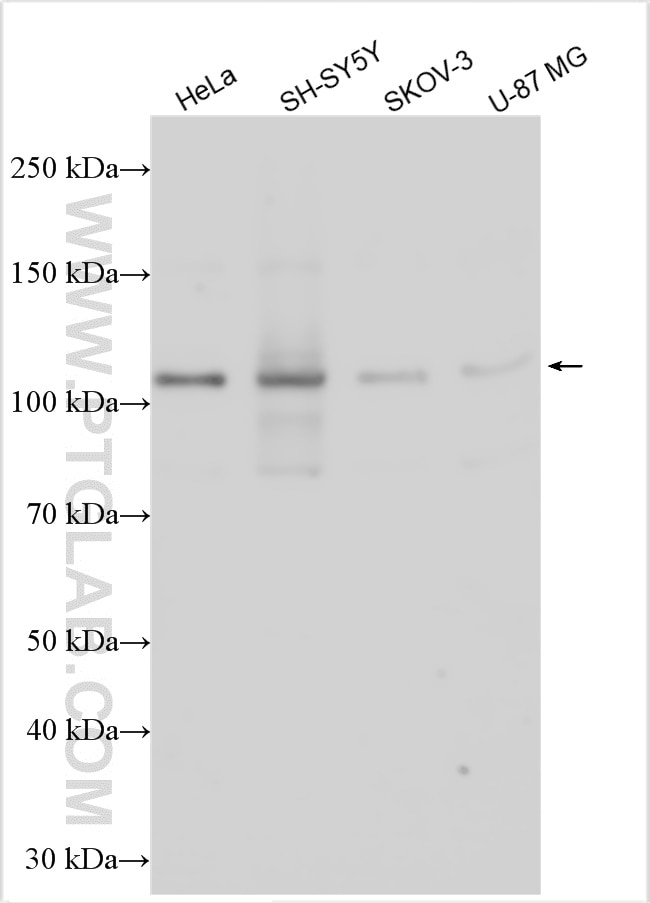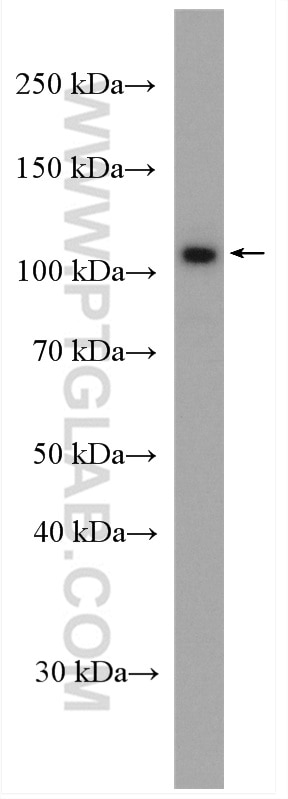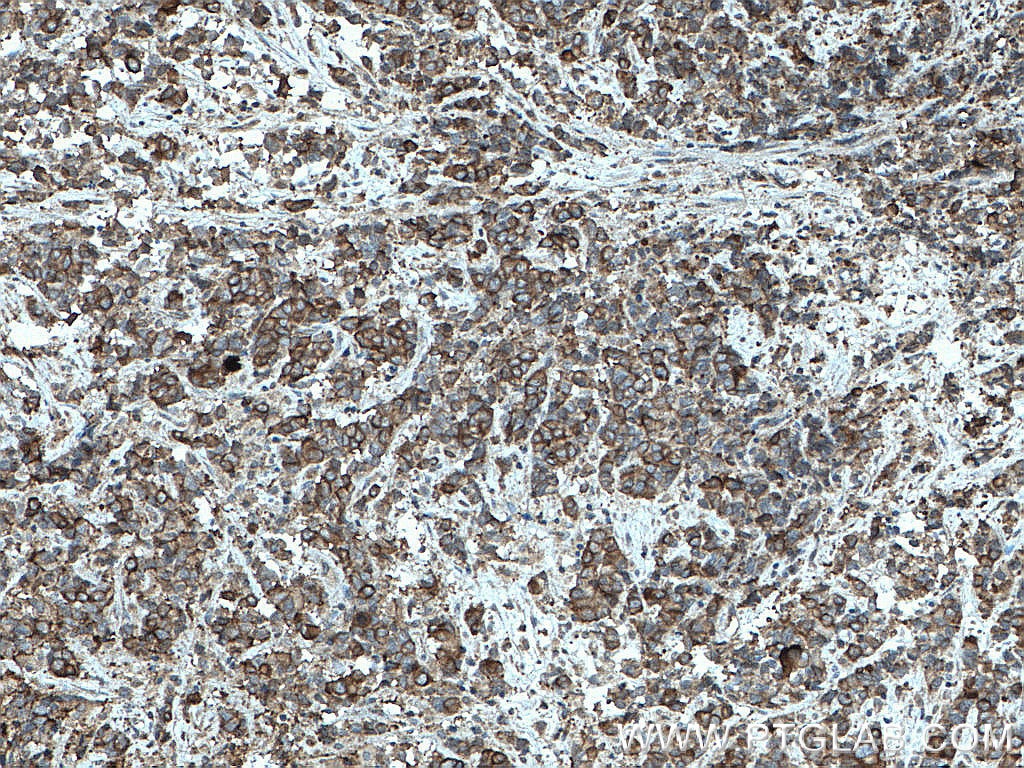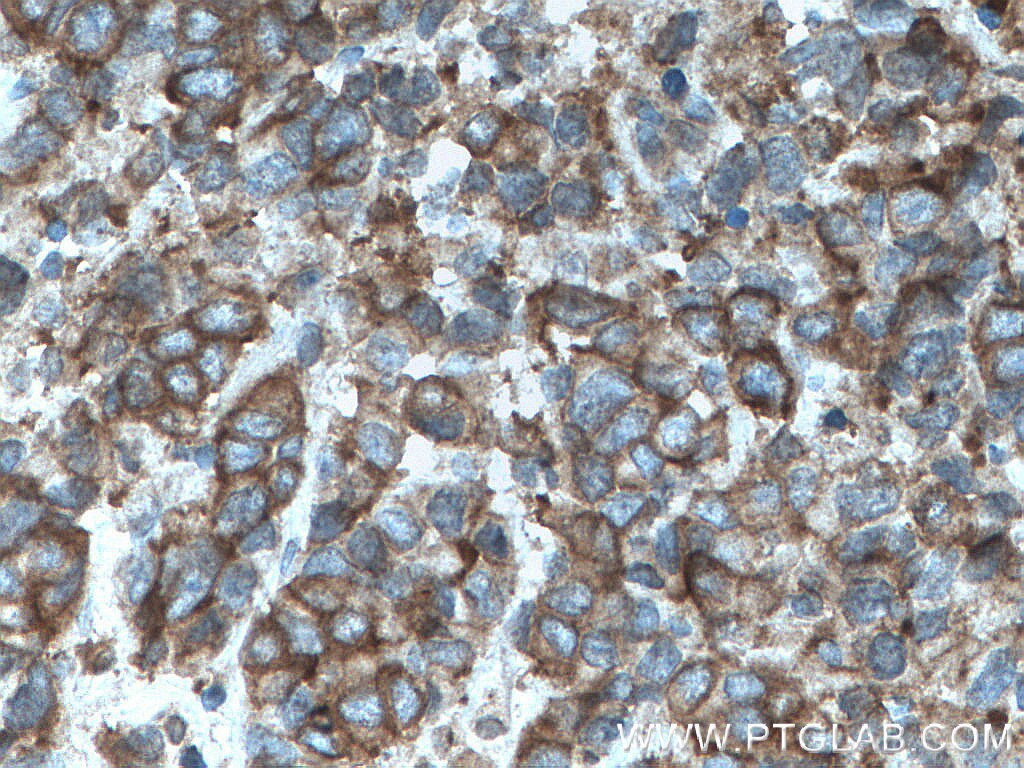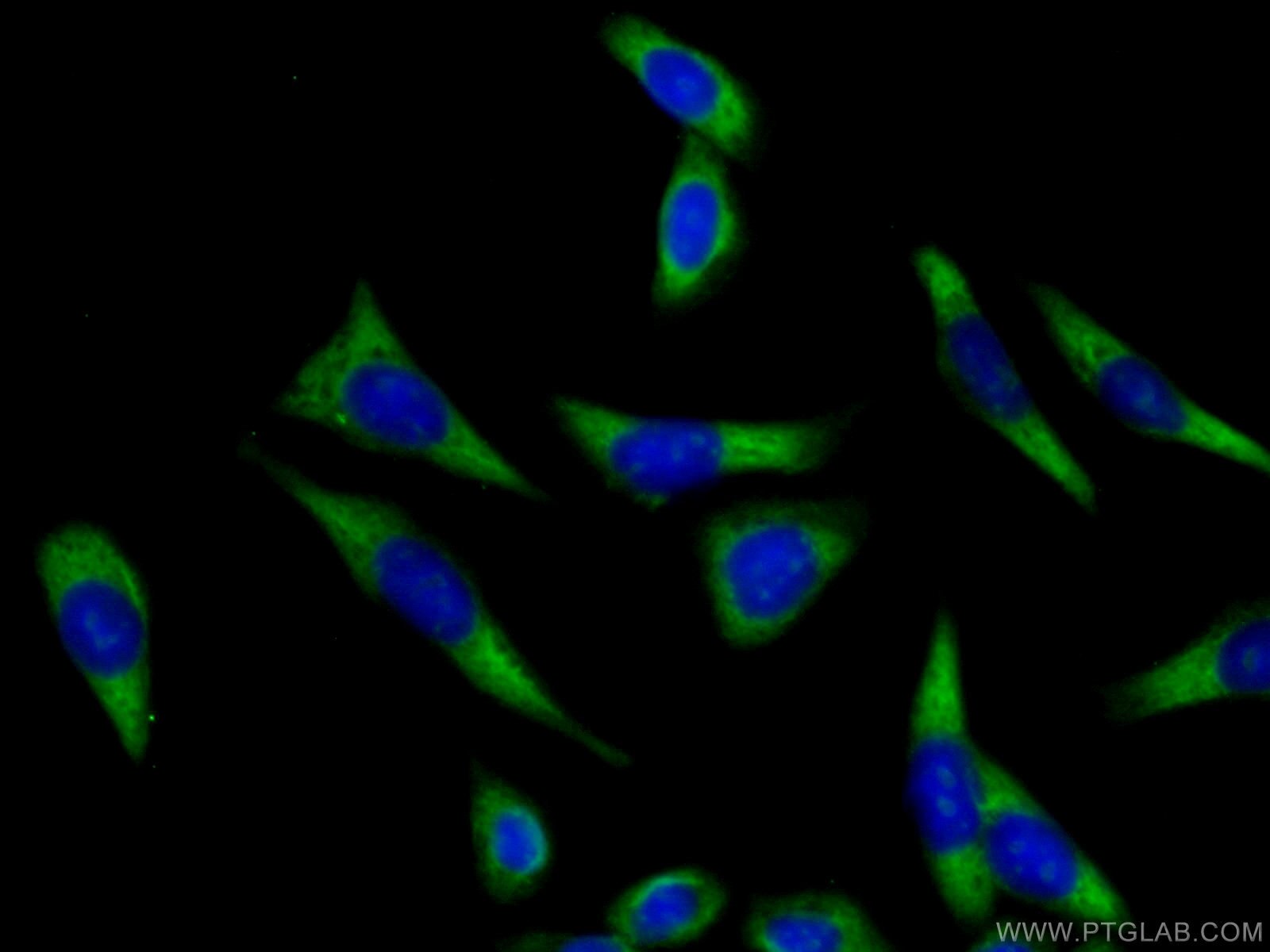Tested Applications
| Positive WB detected in | HeLa cells, SH-SY5Y cells, SKOV-3 cells, U-87 MG cells |
| Positive IHC detected in | human prostate cancer tissue Note: suggested antigen retrieval with TE buffer pH 9.0; (*) Alternatively, antigen retrieval may be performed with citrate buffer pH 6.0 |
| Positive IF/ICC detected in | HeLa cells |
Recommended dilution
| Application | Dilution |
|---|---|
| Western Blot (WB) | WB : 1:5000-1:50000 |
| Immunohistochemistry (IHC) | IHC : 1:50-1:500 |
| Immunofluorescence (IF)/ICC | IF/ICC : 1:50-1:500 |
| It is recommended that this reagent should be titrated in each testing system to obtain optimal results. | |
| Sample-dependent, Check data in validation data gallery. | |
Published Applications
| WB | See 2 publications below |
| IF | See 1 publications below |
Product Information
28030-1-AP targets ATP1A3 (middle) in WB, IHC, IF/ICC, ELISA applications and shows reactivity with Human samples.
| Tested Reactivity | Human |
| Cited Reactivity | human |
| Host / Isotype | Rabbit / IgG |
| Class | Polyclonal |
| Type | Antibody |
| Immunogen | ATP1A3 (middle) fusion protein Ag27705 Predict reactive species |
| Full Name | ATPase, Na+/K+ transporting, alpha 3 polypeptide |
| Calculated Molecular Weight | 113 kDa |
| Observed Molecular Weight | 113 kDa |
| GenBank Accession Number | BC015566 |
| Gene Symbol | ATP1A3 |
| Gene ID (NCBI) | 478 |
| RRID | AB_2881041 |
| Conjugate | Unconjugated |
| Form | Liquid |
| Purification Method | Antigen affinity purification |
| UNIPROT ID | P13637 |
| Storage Buffer | PBS with 0.02% sodium azide and 50% glycerol pH 7.3. |
| Storage Conditions | Store at -20°C. Stable for one year after shipment. Aliquoting is unnecessary for -20oC storage. 20ul sizes contain 0.1% BSA. |
Background Information
ATP1A3 participates in the catalyticing hydrolysis of ATP and the exchanging of sodium and potassium ions across plasma membrane. The catalyticing activity mode is ATP + H2O + Na+(In) + K+(Out) = ADP + phosphate + Na+(Out) + K+(In). It has been published that the neurologic disorders rapid-onset dystonia-parkionsonism (RDP), alternating hemiplegia of childhood (ACH) and CAPOS syndrome (cerebellar ataxia, areflexia, pes cavus, optic atrophy and sensorineural hearing loss) are all related with the mutation of ATP1A3. There are other reports suggest that early life epilepsy and episodic apnea revealing are potentially associated with the mutation of ATP1A3 as a result of impairment of Na+/K+ homeostasis. This antibody is generated agaist the middle region (378-580aa) of ATP1A3 and detects 113 kDa protein in SDS-PAGE.(PMID: 30097153, 20301294, 29922587)
Protocols
| Product Specific Protocols | |
|---|---|
| WB protocol for ATP1A3 (middle) antibody 28030-1-AP | Download protocol |
| IHC protocol for ATP1A3 (middle) antibody 28030-1-AP | Download protocol |
| IF protocol for ATP1A3 (middle) antibody 28030-1-AP | Download protocol |
| Standard Protocols | |
|---|---|
| Click here to view our Standard Protocols |
Publications
| Species | Application | Title |
|---|---|---|
Nat Commun Homophilic ATP1A1 binding induces activin A secretion to promote EMT of tumor cells and myofibroblast activation. |
